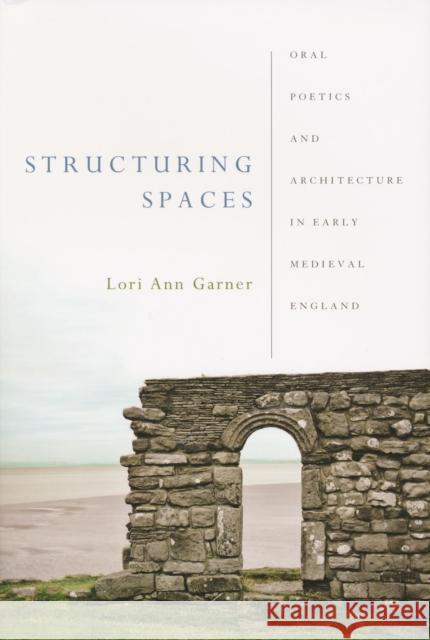Structuring Spaces: Oral Poetics and Architecture in Early Medieval England » książka
Structuring Spaces: Oral Poetics and Architecture in Early Medieval England
ISBN-13: 9780268029807 / Angielski / Miękka / 2011 / 416 str.
Structuring Spaces: Oral Poetics and Architecture in Early Medieval England
ISBN-13: 9780268029807 / Angielski / Miękka / 2011 / 416 str.
(netto: 167,24 VAT: 5%)
Najniższa cena z 30 dni: 173,51
ok. 30 dni roboczych
Dostawa w 2026 r.
Darmowa dostawa!
In Structuring Spaces: Oral Poetics and Architecture in Early Medieval England, Lori Ann Garner illuminates the idiomatic and traditional meanings invested in depictions of architecture within the vernacular verse of early medieval England, portrayals that consistently demonstrate a shared aesthetic between literary texts and physical buildings. Through systematic exploration of the period's verbal and material culture as complementary art forms, Garner argues that in Anglo-Saxon England the arts of poetry and building emerged from the same cultural matrix. Not only did Anglo-Saxon builders and poets draw demonstrably from many of the same traditionally encoded motifs and images, but so rhetorically powerful was the period's architectural poetics that its expressive force continued in literature and architecture produced long after the Norman Conquest.Far from conceiving this inherited tradition as monolithic in nature, Structuring Spacesforegrounds the complex interface of orality and literacy as a nexus of varied and multivalent cultural traditions that influenced the production of texts and buildings alike. After establishing a model of architectural poetics based on oral theory and vernacular architecture, Garner explores fictionalized buildings in such works as Beowulf and the Ruin, architectural representation in Old English adaptations of Greek and Latin works, uses of architectural metaphor, and themes of buildings in Anglo-Saxon maxims, riddles, elegies, hagiographies, and charms. Her book draws on scholarship from art history, archaeology, anthropology, and architecture, as well as the great wealth of studies addressing the literature itself."Detailing the deeply interconnected relationship of Anglo-Saxon oral poetics and the architectonics of constructed space in the period, Lori Garner's Structuring Spacesmakes a significant contribution. Her ability to put the material culture of the period, despite the truly fragmentary nature of the surviving evidence, into a direct and mutually illuminating dialogue with the discourse of oral poetics is very impressive and of considerable value to scholars in the several fields of medieval literature, medieval architecture, and oral theory." --Mark C. Amodio, Vassar College"In this wide-ranging and lavishly-illustrated study, Lori Garner effectively aligns the established approach of oral poetics with insights from the emerging field of vernacular architecture. From Heorot to Grendel's mere, from the Mermedonian prison of Andreas to the nest of The Phoenix, from the Wife's earth-hall to Holofernes' tent, Garner's sensitive readings of the poetics of built spaces in Old English poetry open up new perspectives on "conventional" imagery that we only thought we knew how to read." --Charles D. Wright, University of Illinois











